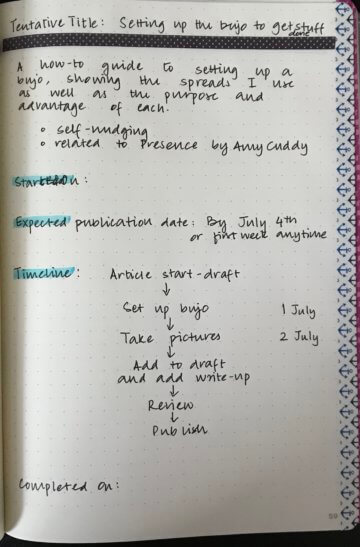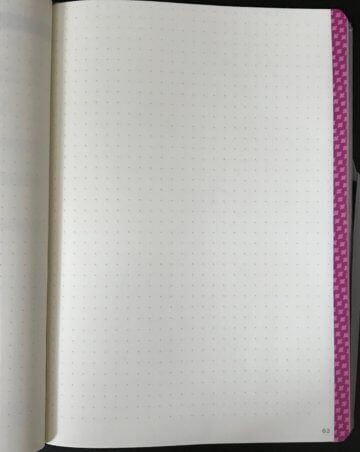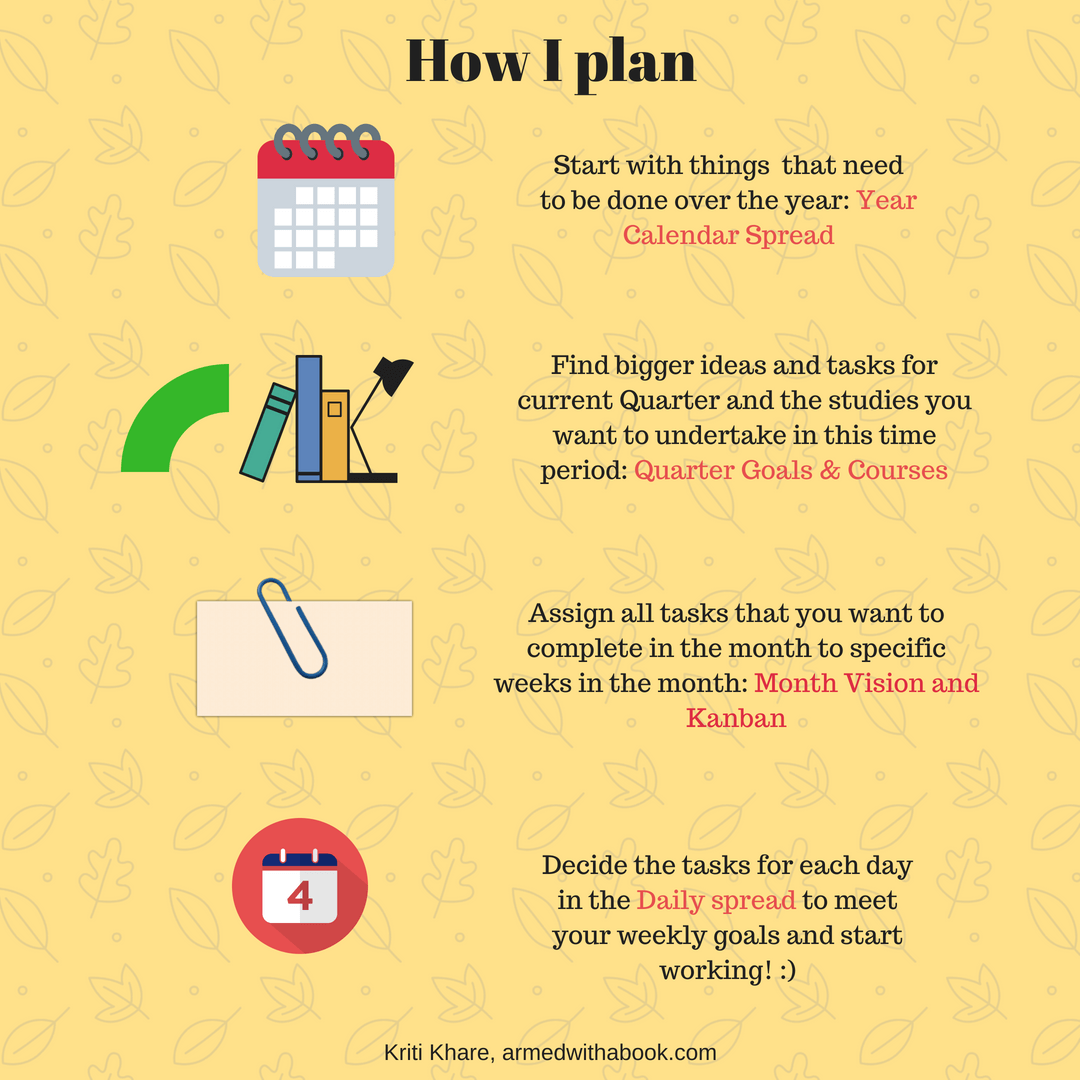I have been bullet journalling for almost a year now. The beginning of July brought the time to set up a new bullet journal and I thought I would give you a glimpse into the planning that goes into a bujo. I recently finished reading Presence by Amy Cuddy and she talked about self-nudging and the bujo has been the tool that I use to self-nudge all the time. As you read and start setting up your own bujo, I will explain how each layout adds a self-nudge to your life.
What’s self-nudging?
Nudging is a behavioural science concept which aims to influence the behaviour and decision-making of individuals and groups by positive reinforcement and indirect suggestions. A great book to read more about the topic is Nudge: Improving Decisions About Health, Wealth, and Happiness by Richard H. Thaler, Cass R. Sunstein.
While the book Nudge is about influencing others, self-nudging is how we influence ourselves. According to Cuddy, self-nudging does the following:
by focusing on each new moment in front of you instead of the performance outcome, you slowly, incrementally nudge yourself toward becoming a bolder, more authentic, more effective version of yourself. (p. 268 of Presence)
The bullet journal is a great tool for self-nudging because it keeps tracks of all my commitments, goals, aspirations, while at the same time, giving me a place to reflect upon my day and note the things I want to do in the future. I did not realize the power it yields until I read Cuddy’s book and I am excited to share this with you.
Setting up the bujo: What you will need

- A journal – I use Leuchtturm 1917 dotted journals. They are made for archival purposes, come with stickers to smoothen that process, and even the paper has an old feel to it.
- Pens – Ghosting is a common problem with paper, where you can see what was written on the other side of the page. I personally do not mind the little bit of ghosting in my bujos (the old archival feel only amplifies). Uniball Vission Needle causes a little bit of ghosting as the ink is wetter, while I have not had similar problems with the Uniball Deluxe Micro. Another great pen is Pigma Micron PN. It has archival ink and dries quite fast, leaving the least ghosting of the three I mentioned here.
- Optional accessories:
- Washi tape – I love washi tapes and my collection is huge. If you like decorating but do not have the time to draw pretty drawings or stickers, washi tapes add a mood to the page without doing much.
- Scissors – If you are using washi tape.
- Sketch pens – Any fine tip markers would do for decoration. I also have Tombows which I use sometimes when I want to make beautiful spreads.
- Stickers, embellishments, anything you like!
Let’s set up the bujo now!
Yearly Spreads
I started with a quote and a yearly calendar where I can record events which are coming up. This is especially helpful to keep track of things far off in the future which I need to remember and also mentally prepare myself for other things that might be coming up. For example, my trip to India has featured in these yearly spreads in the last two bujos and now it is finally here. All the planning that goes behind trips is kept in perspective this way because often we start a couple of months ahead of time.
Quarter-related spreads
What will make this quarter successful?
I bought Lisa Jacob’s year planning book at the beginning of the year and she encourages having an overview of each quarter by dividing the tasks and goals into five sections: to finish, to study, to start, to do and to celebrate. I love these headers because they add an additional element to the tasks: more than just doing something, say writing, I get to celebrate the time I spend writing and every article that I write is a personal accomplishment. Thus, the Quarter Goals is a great way to narrow down to a couple of things that you want to definitely enjoy and remember and can look back to in later years when you are leafing through the bujo.
The bujo is great tracking tool as you would have guessed by now. I love reading and buying books and since my last bujo, I have been keeping a record of what I bought and what I read over the quarter. If you suspect the list of books bought is longer then you are correct! There is no judgement involved here and I find it good to note down what I am buying because next time I open this page to record another new book, I can visually see how I am doing compared to reading the books I buy.
Fill your house with stacks of books, in all the crannies and in all the nooks – Dr Seuss
Though classes are out at the moment, there are a couple of online courses that I have been working on. Since all of them are self-paced, this time, I decided to add in a Deadline tracker for myself, such that I can complete modules before school starts in Fall. The exercise of finding all information about each course such s number of modules and the weekly time commitment that is expected, as well as my own time commitments to other things, it helps me decide reasonably when I can complete certain tasks. Based on this time, I will add to my daily task list to meet these deadlines. These online courses are getting completed by end of August! 🙂
Month spreads
There are four main spreads associated with each month:
- The Memory Calendar: In this I record a memory of the day. I love looking back at the calendars I have filled out to remember fond memories.
- Vision for the month: This is also adapted from Lisa Jacob’s book. Similar to the Quarter goals, these are specific 4-5 goals and tasks that I want to complete this month to call it a success. Through the month, I can look back at this to ensure I am making these things happen.
- Kanban: Kanban is a scheduling system, developed by Toyota for manufacturing. I have one in my bujo to define weekly goals. Each stickie has a different purpose: the orange ones are for books I must finish in that week, yellow are work-related , blue is for writing and researching, green is for vacation while pink is for online courses and studies. These help define the tasks for the days over the weeks to meet these goals. For example, I want to finish the Social Emotional learning book I have been reading. For this, I must allocate sometime everyday or a chunk of time on some days of the week to complete reading and making notes.
- Month review: Similar to the Memory Calendar, this spread helps me find the main things that happened in the month. It is also a great reflection tool because listing my accomplishments, big events in the month, most challenging times, things I am most proud of, personal struggles as well as, how I am different, allows me to document my growth over the month and notice ways in which I can improve.
Weekly and Daily Spreads
I have experimented with these a lot over the last year. I used to have a quote in each day, then a quote for each week, a habit tracker for each week, but now, after months of knowing the things I regularly do, I have reduced tracking to minimum.
For each week, I have a quote to start off and then the rest of the page asks three questions that I fill out at the end of the week. This not only saves space but also allows me to know how the week started and ended.
For each day, I have my tasks and events, sometimes even reminders. I have a reflection section that I write at the end of the day about how it was, simple things I did or want to remember or remind myself later. I also have a Gratitude section to be thankful for people or things.
Blogging related Spreads

I have recently added this spread to the bujo to keep track of writing ideas, timeline to work on them and when I can publish them. This helps me know how many ideas I have been working on concurrently and note others for the future with brief notes.
Note spread

I used to have notes scattered between my weeks but now I place them between months. Notes can be anything from research, meetings, brainstorming ideas or a grocery list.
How do I plan all this?

Aesthetics
I love adding washi tape to the sides of my bujo pages. Each has its own theme and for this bujo, here is my key for the different tapes.

Conclusion
It has taken almost a year of experimenting to find out what I like and what I don’t like to record in my bujo. If you are just starting, I am sure it will take you sometime too. I hope the spreads I mention give you a starting point. If you are using Leuchtturm 1917 dotted journals and want to replicate my spreads, contact me and I will send you the measurements of my grids.
Happy bujo-ing!














Be First to Comment